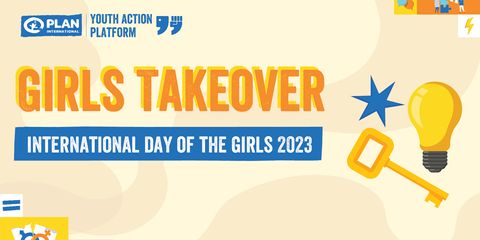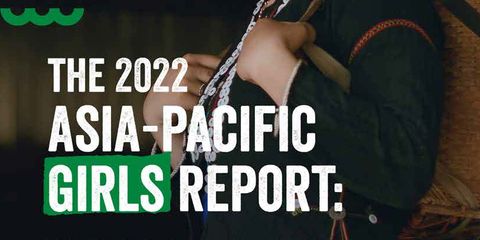Want to Empower Women? Start with Girls!
Introducing the 2020 Asia Girls Leadership Index
17 January 2022March 8th is International Women’s Day, a day on which we recommit ourselves to the cause of gender equality and women’s empowerment. Both are objectives endorsed by every United Nations Member State as part of the Sustainable Development Goals, with 2030 as the target end date for achieving them. Yet at the current rate of gender parity, it will take over 100 years to close the gender gap.

March 8th is International Women’s Day, a day on which we recommit ourselves to the cause of gender equality and women’s empowerment. Both are objectives endorsed by every United Nations Member State as part of the Sustainable Development Goals, with 2030 as the target end date for achieving them. Yet at the current rate of gender parity, it will take over 100 years to close the gender gap.
On this International Women’s Day, we’re asking you to remember that girls are an essential part of the women’s empowerment equation, a part that is too frequently ignored and overlooked across Asia and the world.
“When I started school in Indonesia, there were the same number of girls as boys in my class. By the time I graduated secondary school, there were only a handful of girls left. Over the years, most of the girls left school to help their families, to find informal work, or to get married,” said Suci, co-author and Chairperson of the Kediri Village Child Protection Group, Lombok, Indonesia
“When I was growing up in India, girls and young women were not encouraged to pursue careers in the arts or to use their creative voices and talents publicly. Although interested in film, I was steered towards more ‘appropriate’ endeavors for my age and gender,” said Bhagyashri, co-author and Regional Director at Plan International Asia-Pacific
Our stories are why we are writing to you today. We are concerned for the girls and young women in our world, for their futures, and for the futures of their families. They do not have the same opportunities – to finish school, to make decisions about when to marry or how many children to have, or which careers to pursue. They don’t have access to the same support and resources to follow their dreams. Without this access, it is more difficult for them to become empowered adults and able to seize the increasing opportunities available to women.
“We have the resources and expertise to push towards a gender equal society in Asia, we just need to make it a priority”
Studies show that investment in gender equality can yield tremendous results for all, especially if those investments are targeted at adolescent girls. Yet more and better data-driven action by Asian governments is urgently needed to inform those investment decisions.
The Asia Girls Leadership Index
This is why we are excited to see, the first-ever edition of the Asia Girls Leadership Index. The Index looks at how South and Southeast Asian countries are performing in terms of creating the kinds of societies in which girls can write their own futures. Assessing health, education, protection, economic opportunity, representation, and laws and policies for girls, the index is a powerful tool for governments and stakeholders to determine how they are doing on promoting girls’ leaderships compared to their neighbors. It can also help them to decide where to make investments in the future.
The good news: all countries are doing well in some areas. The bad news: all have room for improvement. Even Singapore, which tops the list overall, has room to improve when it comes to girls’ voice and representation and its laws and policies.
Countries in Asia must act quickly to address those areas where improvement is needed, and reinforce areas in which they are doing well, if we are to achieve the Sustainable Development Goals by 2030.
On International Women’s Day this year, governments, development agencies, companies, communities, families, and individuals will again be asked to think about how they can help create a gender-equal world with empowered women in boardrooms, governments, workplaces, and so on – this will not be possible if we do not support adolescent girls and give them the voice and opportunity to pursue these paths. And please, invest in adults too, just don’t forget girls.
Now is the time for Asia to invest in adolescent girls and their development to become empowered women. Now is the time to translate our economic successes into investments in gender equality within our societies, communities, and households. Now is the time for Asia to demonstrate what can be achieved when we invest in adolescent girls’ development and leadership.
We have the resources and expertise to push towards a gender-equal society in Asia, we just need to make it a priority!
Categories: Campaigns


